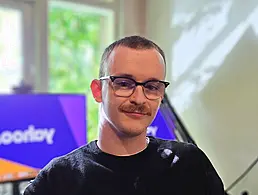What even is a committer? We spoke to two Oath researchers about what it means and why it’s important in the world of tech.
When it comes to the tech world, being a committer is a pretty big accolade. It indicates that someone is considered to be an expert in a particular technology.
One such technology is Apache HBase, an open-source, non-relational, distributed database. Eshcar Hillel and Anastasia Braginsky from Oath’s research office in Haifa, Israel both recently attained the title of Apache HBase committers.
Hillel and Braginsky work together on Oath’s scalable systems research team, and hold PhDs that span across concurrent data structures, and distributed and parallel computing.
“At the moment, I continue to contribute to HBase and am focusing on a new policy for the Accordion project that can automatically tune in-memory compaction based on workload,” explained Hillel.
Braginsky spoke about how the team recently proposed a new data structure in HBase, which can be densely represented in memory. “This representation is about to be useful in HBase as part of our previously committed Accordion project, which was also about smart use of memory,” she said.
For those unfamiliar with HBase, Hillel said it provides random, real-time access to your data in Hadoop. “It was created for hosting very large tables, making it a great choice to store multi-structured or sparse data,” she said.
Both Hillel and Braginsky know the importance of being a committer. “Each can help evolve the code by submitting patches as small as fixing a typo, or as big as adding an external feature, or changing the internal architecture,” said Hillel.
“In short, a HBase committer is a developer with commit privileges to push patches into the Apache Repository.”
The road to Apache
To get to this stage in their tech career, both researchers worked extremely hard.
Braginsky said the toughest part of her career was doing her first degree. “I came to Israel alone at the age of 15 and from age 17, I was living on my own and fully supporting myself financially,” she said. “But it was still fun and I have good memories from this period, so I don’t think there’s anything I would change.”
When it comes to the skills they use, Hillel and Braginsky said they can be anything from devising sophisticated algorithms, to running benchmarks. “Each work day is different, but an average day includes coding, debugging, running benchmarks, meetings, discussions, paper writing, thinking and creating,” said Braginsky.
While women in tech is still, and will possibly always be, a hot topic, Hillel and Braginsky both spoke positively about their experiences throughout their career. “I’ve had a pretty great experience and can attribute that to having wonderful role models to look up to and go to for advice,” said Hillel.
Braginsky said she has been fortunate enough to surround herself with really supportive friends and colleagues, but knows the road is not always so easy for others. “Throughout my career thus far, I’ve never felt like I’ve needed to prove myself as a woman in tech. However, I realise, of course, this is certainly not the case for all women in this industry.”
Hillel advised people starting out to always look at the bigger picture. “Often, systems we build are not accessed directly by human users, but by some application layer. Beyond thinking about scalability, high availability, response time and resource utilisation, you should always understand the context in which the system works, the workload and what tradeoffs are most important for the application.”
Braginsky spoke about the skills you need to succeed, mentioning that computer systems and programming are mostly self-taught. “Of course, you need to take classes to help with the process,” she added.
“If you’re not spending time outside of class doing this work, you’re memorising trivia and not learning. So, I would suggest trying and downloading some open-source systems, reading about them, running them and seeing what happens!”




